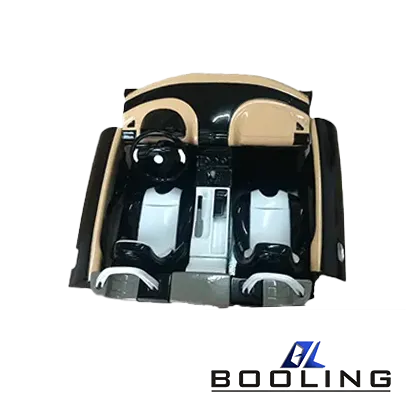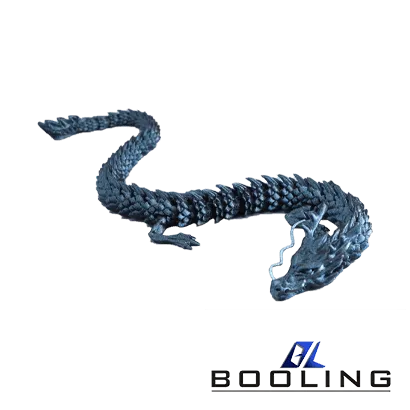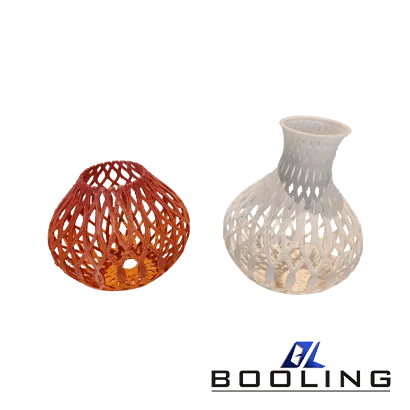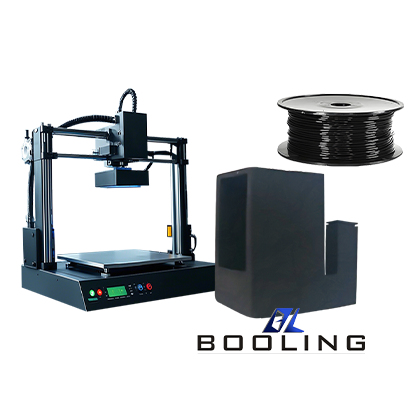Home > Custom 3D Printing Service
One major advantage of 3D printing is the ability to turn virtual imagination into reality. Traditional manufacturing techniques increase the manufacturing cost as the design complexity of complex items increases. However, 3D printing technology is different as it can produce products that are difficult or even impossible to process using traditional techniques.
Advantages of Metal 3D Printing:
- Faster Production Times
- Cost Consistency Across Volumes
- Lightweight Parts
- Rapid Iteration and Prototyping
Custom 3D printing technology, as an emerging rapid prototyping manufacturing technology, plays an important role in manufacturing complex product components. Precision custom resin 3D printing can quickly achieve personalized nonmodular production for enterprises, greatly saving a lot of costs and manufacturing time in product development, and not worrying about the size limitations of manufacturing molds, making it suitable for flexible production. In the automotive industry, the advantages of custom abs 3D printing technology are product speed and customization.
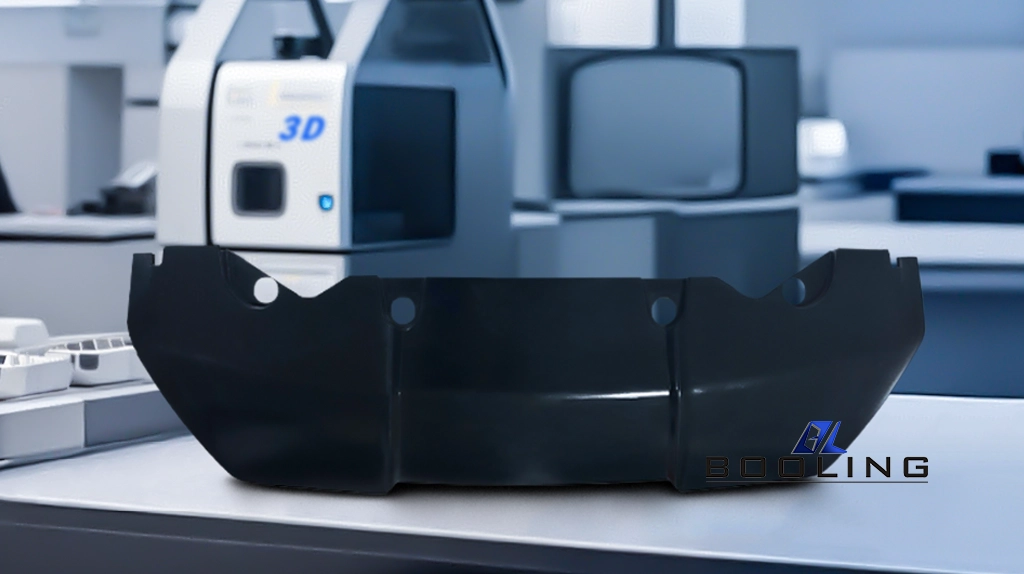
Application Areas of Custom 3D Printing
From the perspective of the commercial application prospects of metal 3D printing technology, there are already a series of applications gradually changing people’s production and life. Custom metal 3D printing technology is applied to manufacture a variety of products and is widely used in many industries. Nowadays, it has shown broad application prospects in many fields such as aerospace, automotive, construction, medicine, and biotechnology. Whether it is personalized creative applications in the field of personal consumer goods or the manufacturing of a considerable number of daily necessities, 3D printing is gradually being used.
Automotive Industry: The application of custom 3D printing technology in the automotive industry mainly focuses on four stages: conceptual model development, functional verification prototype manufacturing, tool manufacturing, and small batch custom finished product production.
Construction Industry: In the field of architectural design, custom 3D printing technology is widely used. Engineers and designers have accepted the use of 3D printers to print building models, which are fast, low-cost, environmentally friendly, and produce exquisite designs that fully meet the requirements of designers, while also saving a lot of materials.
Medical: Metal custom 3D printing technology has various applications in the medical field. It can be used for making surgical planning models, teaching and training, and prototyping medical devices. By printing 3D models based on real patient imaging data, high-quality and high-precision products can be manufactured.
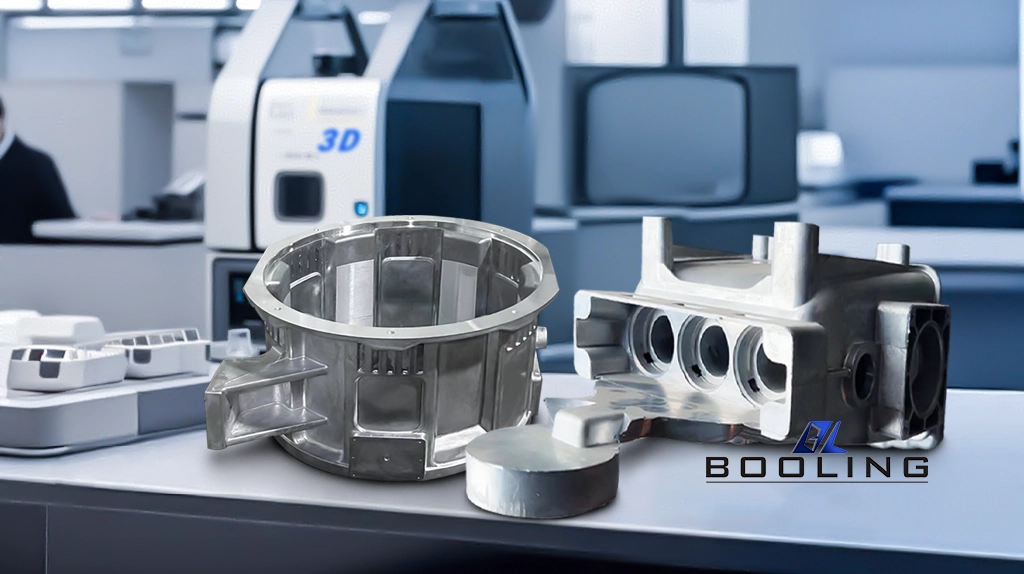
Custom 3D Printing Design
Custom 3D printing technology has a wide range of applications in the automotive industry, and precision 3D printing technology design has many aspects, including material selection, prototype production, component manufacturing, and other applications in the automotive industry.
- Material Selection. In custom 3D printing applications in the automotive industry, commonly used materials include advanced engineering plastics such as ABS and PC. These materials have excellent heat resistance, strength, and rigidity, which can meet the requirements of the automotive industry for components.
- Prototype Production. Metal custom 3D printing technology can be used for automotive prototyping, from conceptual design to the manufacturing of validation samples. By using custom 3D printers, suppliers can quickly produce automotive component prototypes with complex structures, accelerate product development cycles, and save manufacturing costs.
- Component Manufacturing. Plastic 3D printing technology can also be used for small-scale manufacturing of automotive components. By transferring the 3D model to a 3D printer, it is possible to manufacture components that meet design requirements without the need for traditional mold manufacturing and tedious processing techniques, which has advantages in small batch production and custom components.
- Quick Repair and Replacement. Magnesium custom 3D printing technology can provide a quick solution in the process of repairing and replacing parts. For parts that cannot be obtained immediately, existing parts can be scanned in 3D and 3D printed to manufacture temporary or substitute parts, improving maintenance efficiency.
- Innovative Design. Custom 3D printing technology provides greater freedom for innovative design in the automotive industry, producing more complex and unique parts and components, helping car manufacturers achieve innovation in exterior design, lightweight, and performance improvement.
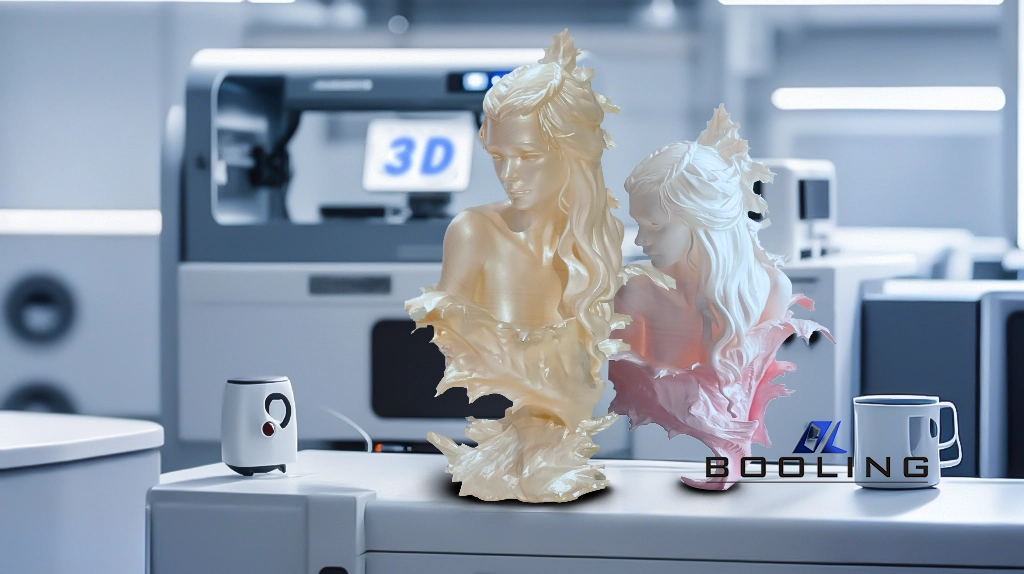
Custom 3D Printing Technology
- Melt Extrusion Type
Fused Deposition Modeling (FDM) is a common 3D printing technique, also known as fuse deposition technology. This technology involves heating liquid thermoplastic materials above their melting point, starting to solidify at temperatures below their melting point, and then extruding them onto a model to establish a mold.
Fusion deposition 3D printing is a process of manufacturing three-dimensional objects layer by layer and line by line. This technology has three steps: 1) preparing the designed CAD model; 2) Converting the model into a format that can be understood by custom 3D printers; and 3) Transforming CAD models into physical entities using a melt pile 3D printer.
- Inkjet Adhesive Powder Type
At present, custom 3D printing equipment mostly uses powder materials as raw materials, and there are many types of materials used, such as ceramic powder, metal powder, and plastic powder. Then, the layer is drawn using the adhesive force of the bonding agent. Due to the limitations of the adhesive force, the strength of the printed components produced by this process is generally low and requires post-processing. The specific printing process is as follows.
(1) After the bonding of the previous layer is completed, the forming cylinder is lowered by one layer thickness distance, and the powder supply cylinder is raised by one height. A certain amount of powder is pushed out through the leveling roller, and the workbench is leveled and compacted.
(2) Excess powder is collected by the powder collection device during the flat roller powder spreading process.
(3) Under computer control, the nozzle selectively sprays adhesive onto the construction layer based on the forming data of the next construction section.
(4) Repeatedly delivering, spreading, and spraying adhesive in this way, ultimately completing the bonding of a three-dimensional powder.
(5) The areas that have not been sprayed with adhesive are dry powder, which plays a supporting role during the molding process and is relatively easy to remove after the molding is completed.
(6) Perform post-processing such as firing on the printed object.
The accuracy of inkjet adhesive 3D printing technology is mainly affected by two aspects: on the one hand, the accuracy of the powder blank produced by adhesive after printing, the positioning accuracy of the sprayed adhesive during the spraying and bonding process, the impact of the liquid adhesive on the powder material, and the compression effect of the upper powder weight on the lower parts will all affect the accuracy of printed defective parts; on the other hand, it also includes the accuracy of secondary processing (baking) of the blank, which will cause shrinkage, deformation, and even micro-cracks in the printed blank during subsequent firing and other treatments, all of which will interfere with the accuracy of the final part.
- Laser Sintering (SLS)
Laser junction technology has high precision, especially when using plastic materials such as nylon to manufacture objects. However, sintered (or incompletely melted) metal plastic mixed powders cannot be used in the production of final products for engineering applications, such as engine components. Because of this, there have been deformations in laser sintering technology, such as using laser beams to fully melt particles into single material powders, such as aluminum, copper, steel, titanium alloys, iron, silver, and tool steel, to manufacture purer metal objects.
- UV Curing Forming
Light-cured lithography (SLA), also known as stereolithography, is a type of rapid prototyping technology, abbreviated as SLA or sometimes referred to as SL. Light curing forming technology was widely used in the early days, which is a rapid prototyping technology and is currently one of the most deeply researched, technologically mature, and widely applied rapid prototyping technologies.
The photopolymerization molding technology mainly uses photosensitive resin as the raw material, and focuses a specific wavelength and intensity of laser (ultraviolet light) onto the surface of the photopolymerization material, causing it to solidify in sequence from point to line and from line to surface, thus completing the drawing of a layer cross-section. Then lift and lower the printing table vertically by one layer thickness unit, and then irradiate and solidify the next layer. This completes the process of solidification and movement in a loop, thereby stacking layers to complete the printing of a three-dimensional solid.
By using this technology, it is beneficial to improve the quality of the workpiece. Light-curing molding technology can produce any complex three-dimensional physical entity without the need to prepare any molds, cutting tools, or fixtures. The application of this technology greatly shortens the development cycle of new products and reduces development costs. Custom 3D printing technology has been widely used in various industries such as aerospace, mechanical manufacturing, architectural design, industrial design, healthcare, animation, and film and television production.
Custom 3D printing technology has a very promising future and a wide range of applications in various fields, such as model design and prototype production. The current major enterprise-level 3D printing equipment is also widely used in related fields, including industrial manufacturing, architectural modeling, jewelry customization, and emerging 3D photo studios.
3D Printing Service Related Content
Applied’s expertise in modifying materials at atomic levels and on an ihdustrial scaleenables our customers to transform possibilities into reality.

